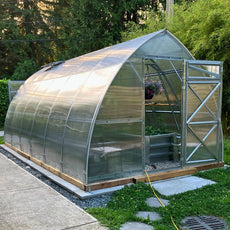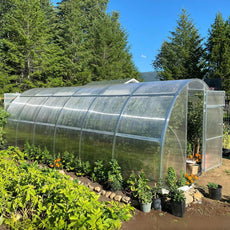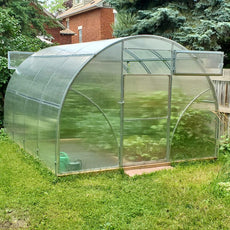In this article, you will learn:
- Characteristics of Italy’s Planting Regions
- Challenges of Growing in Italy
- The Benefits of Using a Greenhouse in Italy
In recent years, Italy has faced increasingly unpredictable weather patterns, from sweltering summer heat waves exceeding 40°C in the south to unexpected late frosts in the northern regions. This diversity makes gardening in Italy both rewarding and complex.

Image from Plant Maps
Characteristics of Italy’s Planting Region
Its geographical diversity and Mediterranean positioning influences Italy's climate:
- Mediterranean climate in coastal and southern areas, continental in the north
- Hot summers, particularly in central and southern regions, with temperatures exceeding 35°C
- Mild winters along the coasts, harsher winters in northern and mountainous areas
- Irregular rainfall, with prolonged dry periods in the south and frequent storms in the north
- Risk of late frosts in higher elevations
- Strong regional winds, such as the Scirocco and Tramontana
These factors pose challenges like water scarcity, temperature fluctuations, and the need for heat- and drought-resistant plant varieties. The growing season varies significantly, from year-round possibilities in the south to a shorter six-month season in the north.
Challenges of Growing in Italy
Extreme Heat
Gardeners in Italy must contend with scorching summer heat in many regions, leading to water stress and potential crop damage.
Water Management
Southern Italy faces significant drought conditions, making efficient irrigation and water conservation essential for sustainable gardening.
Strong Winds
Coastal and mountainous areas experience potent winds that can dry out plants and damage delicate crops, emphasizing the need for protective structures.

The Benefits of Using a Greenhouse in Italy
A greenhouse offers essential protection from Italy’s varied climate, extending growing opportunities and enhancing plant health.
1. Extend your growing season
- Without a greenhouse
Outdoor cultivation highly depends on regional conditions, with central and northern Italy experiencing shorter growing windows due to colder winters.
- With a greenhouse
A well-managed greenhouse provides year-round growing conditions, shielding plants from extreme heat in the summer and frost in the winter.
2. Grow a Wider Variety of Plants
- Without a Greenhouse
Gardeners typically focus on hardy and heat-resistant crops, such as:
|
Tomatoes Peppers Eggplants Beans Lettuce |
Onions Peas Berries Olives Grapes |
- With a Greenhouse
A greenhouse expands the range of cultivable crops, allowing for a more diverse harvest, including:
|
Tomatoes Cucumbers Bell peppers Chili peppers Eggplants Zucchini Corn |
Leafy greens Berries Microgreens Herbs Peas Carrots Asian greens |
Radishes Spring onions Microgreens Baby turnips Broccoli Cauliflower Okra |





